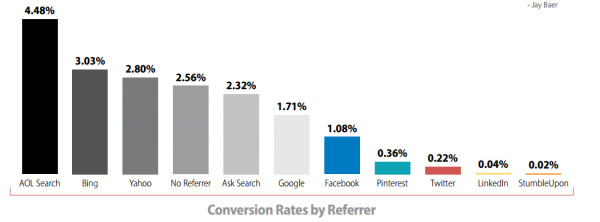What is a Marketing Conversion Rate?
A marketing conversion rate is defined as the percentage of visitors who take a desired action. Every company has specific actions that they want their visitors to take, such as filling out a form, subscribing to an email newsletter or requesting a consultation. All of these actions are tracked to see if your marketing efforts are working and if anything needs to change.
Your first goal is to promote awareness to get your target audience to know about your product or service. Your next goal is to influence consumer behavior to convince customers to make a purchase.
How to Track Conversion Rates
Keep in mind that a conversion doesn’t always mean that a sale has been made, but it does indicate that a visitor took some kind of action which moved them further down the sales funnel. It can mean that someone made a purchase, signed up for an email newsletter or took another type of action. Remember that you need to see if your marketing efforts are working, otherwise there will be no improvements.
You need to compare various data sources, which is usually done within a campaign or across several campaigns. The marketing conversion rate depends on which action you want someone to make.
Use a tool such as Google Analytics or HubSpot to get a detailed look at various reports. These reports can show you the total amount of visits, conversions and conversion rate for each of your goals. You can also see how many of your visitors were attracted to your website or landing page by seeing a breakdown of conversion rates by each referrer.
Photo Credit: Mashable
How to Boost Your Conversion Rates
After tracking and analyzing your conversion rates, you can get a better idea of what marketing efforts need to be improved. There are several ways to increase your conversion rates, but it all depends on your specific marketing goals.
Social Proof
Most visitors tend to read reviews about a product or service before making a purchase in order to make sure that is well-received by other customers. In order to provide social proof, you can add customer testimonials and case studies to your website.
User-Friendly Website
The ease of being able to seamlessly navigate through a website is extremely important to visitors. If they have a negative experience, such as difficulty finding an item that they are searching for, they will quickly lose interest and find a different website to browse.
Credibility
Build the confidence of potential customers by showing them that your company is well-trusted. You can gain credibility by adding any certifications like HubSpot or “trust” seals, like the Better Business Bureau to your website.
Compelling Content
You want to constantly produce original, compelling content that is relevant to your potential customers. A great way to share information is through a blog, which will increase your visibility and your search engine ranking as well. Fat Guy Media’s content writers are experts at planning, producing and distributing content that will attract the right audience in the right place at the right time. 


